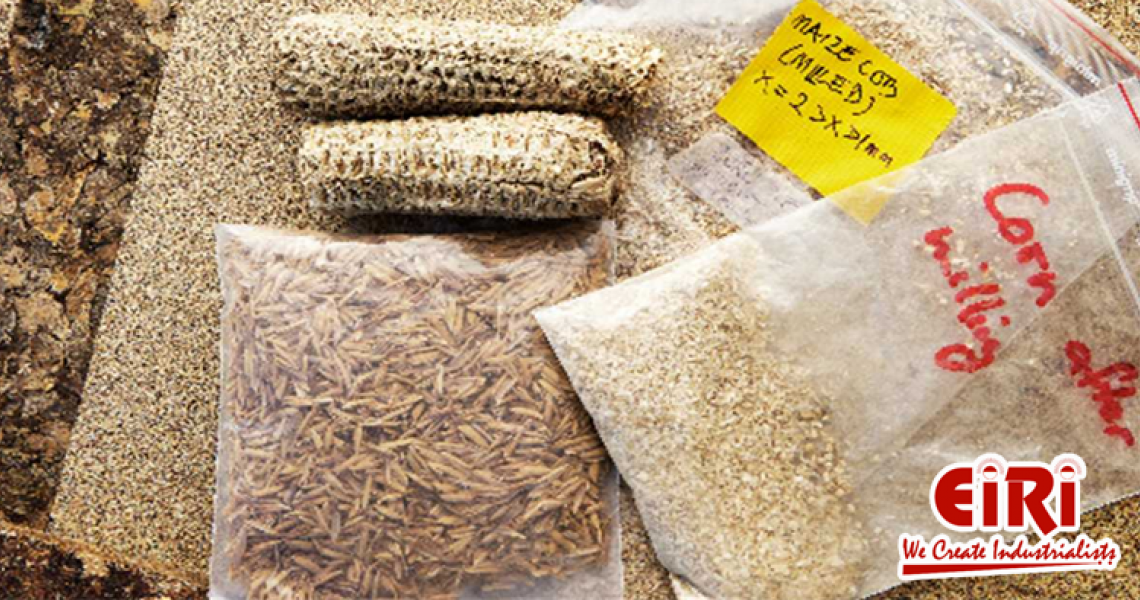Agro-Industrial Wastes Industry

Agricultural residues are alternate sources for the production of different products, such as mushrooms, biofuel, biogas, and tempeh, in various industries as raw materials. The agro-industrial wastes reduce the production cost of raw materials and the pollution load from contributing to the environment.
What is Industrial waste
Industrial waste is any waste produced through industrial activity. Such waste includes materials rendered useless during the manufacturing process. Factories, mills, industries, and mining operations produce industrial waste.
What is Agro Waste
Agro Waste is a term used to describe the waste material produced during farming practices that can be any chemical, pesticide or fertilizer. These materials are typically hazardous and must be reduced in usage, but they are needed in greater quantities to obtain optimum crop products.
Agro industry wastes uses
Agro industrial wastes are useful in the manufacturing of enzymes, biofuels, antioxidants, vitamins, antibiotics, animal feed, and through SSF (Solid-state fermentation) the production of other chemicals. Microorganisms in a variety are used to produce valuable products following the SSF processes.
Agro-industries such as coffee processing industries, coir, and sugar industries pile lignocellulosic water in a huge amount. The wastes are coir pith waste, biogases, and coffee husk, and these are a menace to the environment. Thus, now the reuse of agro-industries solid wastes to produce eco-friendly building and construction materials is the focus. As there is a natural resource shortage due the natural resource exploitation, it is time to consider the sustainability of the natural resources for the future and the present. The main importance is agricultural utilization of the soil as primary importance. Red and black soil is exploited for the building and construction material.
The modern brick industry is facing challenges including raw materials shortage, cost, and environmental impact on production. Meeting this challenge relies on various researches taking place around the world. A different analysis is being done to identify solid biowastes as per their properties such as bulk density, particle size, thermal properties, and porosity.
Sludge ash
The wastewater and the addition of water treatment sludge to bricks demonstrated benefits to clay brick. There is inconsistency in the processes and test results, while there is a lack of information on chemical composition, materials consistency, and product durability creates the need for lab testing of production facilities, besides the wastewater sludge additions to bricks demonstrating benefits to clay brick. However, the dewatered sewage sludge showed improved quality at 10 to 50% based on its thermal-gravimetric and physic-mechanical analysis.
Agro-industrial wastes
The farm and agricultural waste and the agro-industrial wastes are piling up forming solid wastes. These huge quantities of lignocellulose contents are left unused, and it takes a long time to degrade. Solid agro wastes are used as low-cost alternatives in construction as building materials and additives.
The coconut and sugarcane fibers characteristics by FTIR and thermal analysis are in use as alternative fuels. Even coffee grounds are a highlight to have their advantages as clay bricks. Sugarcane biogases are an alternative tested fuel and are useful. It is tested for its compressive strength through mechanical properties and water porosity.
Benefits of using agro-industrial wastes as additives
As per the study and experiments, agro wastes have these benefits:
- Adding to the clay body organic residue’s increases the water content requirement for extrusion (apparent plasticity).
- The residues fibrous nature did not create problems as it was shaping when used up to 10% wt. No extrusion.
- Failures were observed.
- There was a strong increase in drying shrinkage and the addition of organic residue increased.
- The clay body drying shrinkage increased the addition to stabilization of cellulose fibers and it was mainly due to high water content.
- The organic residue additions increased the clay sample’s dry strength, though the drying shrinkage has increased strongly, and this strength increases its usefulness to reduce scraps in handling the unfired bricks problems.
- The fired sample’s compressive strength is low due to the addition of the residue. However, the values are higher than the Turkish standards requirement.
- The organic residues are burnt during firing from the clay body. They were not bloating or had black cores after firing. There was no damaging effect as per the manufacturing parameters of the brick.
- The addition is less effective to decrease the bulk density of the clay body. The residues increase open porosity, and it may improve the properties of thermal insulation while it lowers building dead load.
- Organic residues are in use effectively up to 5% residue as pore-forming as weight addition.
Future prospectus
Agro-industrial residues or wastes are rich in bioactive compounds and nutrient composition. These wastes comprise composition variabilities such as minerals, sugars, and proteins as they are the raw material and not waste for other industrial processes.
The nutrient occurrence in these residues offers appropriate conditions for the microorganism’s prolific growth. The microorganisms feature the potential to reuse the raw materials that are the waste for their fermentation processes. The agro-industrial wastes in the SSF processes are solid support for the production of beneficial compounds. The use of agro-based industry and agricultural wastes as raw materials helps in reducing production costs and in contributing waste recycling to make an eco-friendly environment.
Conclusion
Various parameters adhere to research and testing methods. It is as per the raw materials characterization that the focus and the standards in the brick industry are revealed. The present study is useful to develop and design sustainable technology to produce bricks using agro- industrial wastes. It may be an alternative low-input sustainable technology in the construction and building industry.










